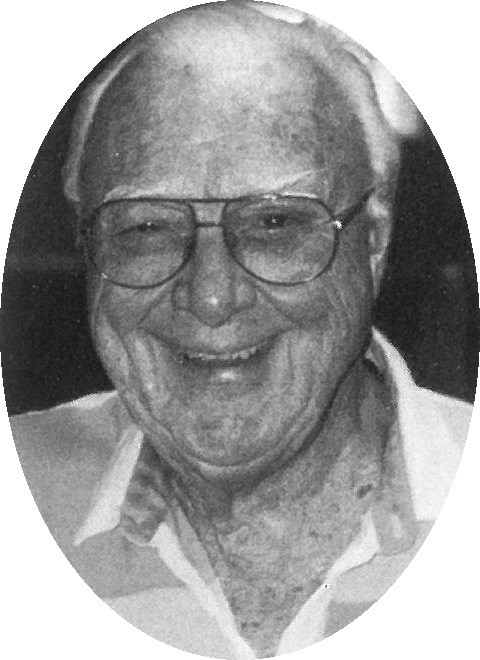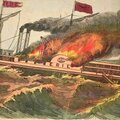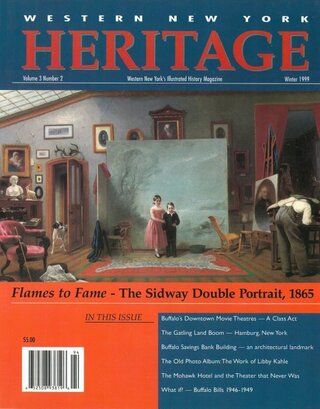The Erie Canal was one of the most significant water routes in the United States during the 19th century. Immigrants used it to relocate and start new lives in America, while tons of steel, grain and other products were carried by boat to cities in order to fuel the industrial boom. The Canal was a vital waterway as well as a man-made wonder, and, fittingly, it attracted dedicated workers and dreamers alike. Marvin A. Rapp was both and, indeed, the Canal became a lifelong passion for him.
It is not unfair to say that Rapp knew more about the Erie Canal than any other historian. Western New York Heritage’s managing editor Paul Redding met Rapp in 1989, after discovering his doctoral thesis in Buffalo State College’s library. After the Institute was founded, Redding and a colleague spoke with Rapp and encouraged him to rework his 1964 book, Canal Water and Whiskey. The book is not a straight-forward historical account of life along the canal. Rather, it is a collection of stories, legends, anecdotes and even songs that Rapp gathered after interviewing hundreds of people, or “Canawlers” as he called them, whose work and lives revolved around the Canal. Western New York Heritage Institute reprinted the book, and it sold out rapidly. Rapp, in turn, became involved with the Institute as a consultant. He also encouraged the creation of this magazine. Having him as a consultant was an honor and a pleasure, and Rapp remains an inspiration and a guiding force, even after his death.
Although he did not experience the Canal during its glory days as the fastest route to the Great Lakes, Rapp worked harder than any other historian to keep its spirit alive. “Marvin was a romantic, but he was also very practical,” says John Sprague, a friend of Rapp’s since the 1950’s, when Rapp was director of the Port of Buffalo. In this capacity, he obtained a copy of the Frederick Harris report. The report was an exhaustive study of the port, its history, and its present condition. Rapp envisioned forming a Port Authority so that Buffalo could take advantage of the St. Lawrence Seaway, which was being constructed. But before he could form a Port Authority, Rapp needed the legislation passed in Washington, Albany, Buffalo, Fort Erie and Ottawa! For this purpose, Rapp recruited Sprague and approximately 30 other young men in order to educate people on the significance of the Erie Canal. Only someone as dynamic as Rapp could have inspired this group to give as many as 100 speeches a week and embark on a telephone campaign to gather support for their cause. “He was magnetic,” Sprague says of Rapp without a moment’s hesitation. The group’s efforts paid off when the Niagara Frontier Port Authority was formed. Unfortunately, according to Sprague, the new Authority did not result in an economic revitalization of the port as the group originally intended. “It was a great disappointment. It was a totally political board that lacked vision,” Sprague says.
Controversy regarding Buffalo’s management of its portion of the Erie Canal still resonates today. Most recently, the Canal slip which was the western terminus of the original Canal was excavated, but will be reburied following announcements by Buffalo officials that there is not enough money to pay for its restoration. Many Buffalo natives believe that to bury a historical treasure and lose the precious tourist dollars that could have been earned, is scandalous. Some $27 million has been earmarked for the rebuilding of Buffalo’s inner harbor, but, unfortunately, none of this will be allocated for the restoration of the old Canal slip.
Rapp’s death is certainly a great loss to Canal preservationists and history enthusiasts. It seems they have lost their most passionate advocate. Yet Rapp dreamed great things for the Erie Canal and for Western New York, perhaps hoping that those he shared his vision with would dream just as passionately as he did.








